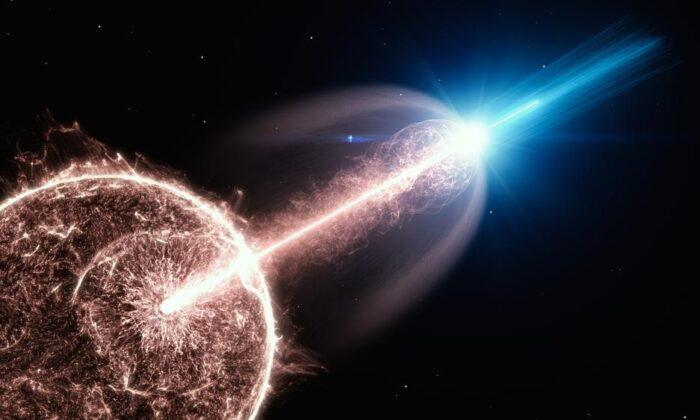Years ago, if you joined a stargazing party in a rural area, you could admire a dark night sky that was largely free of manmade light pollution.
Those days may be behind us now.
Satellite companies are rushing to launch small satellites into low orbits of Earth to provide fast internet access to remote places. These satellites form artificial mega-constellations that are quickly changing the night sky.
For instance, Elon Musk’s SpaceX has launched around 1,300 small satellites into space as part of its Starlink internet service, and SpaceX has already gotten permission to launch 12,000 of them. Now, even in the darkest places on Earth, the night sky is contaminated by the trajectories of these small satellites, which can sometimes be seen with the naked eye.
This would surpass a threshold set over 40 years ago by astronomers to determine whether a location is light polluted.
The new study was the first one to consider the space objects’ overall impact on the night sky, according to the statement. Previous research mostly emphasized the effects of individual satellites and space debris affecting astronomers’ images.
The research team modeled the contribution of space objects to the brightness of the night sky, based on the known distributions of the objects’ sizes and brightness levels.
The study included both satellites and assorted space debris. Although professional telescopes and sensitive cameras are able to see space objects as individual points of light, low-resolution equipment and the human eye can only see the combined effect of many space objects, according to the statement.
The effect is an increase in the brightness of the night sky, which could obscure the Milky Way and other sights.
“Unlike ground-based light pollution, this kind of artificial light in the night sky can be seen across a large part of the Earth’s surface,” John Barentine, Director of Public Policy for the International Dark-Sky Association and a study co-author, said in the statement. “Astronomers build observatories far from city lights to seek dark skies, but this form of light pollution has a much larger geographical reach.”
Astronomers have expressed concern about the growing number of manmade objects in the sky, particularly mega-constellations of communications satellites.
As the number of satellites grows, the chance that they will collide with each other or with other objects increases. These collisions produce more debris.
The new research suggests that the night sky will continue to brighten as new satellites are launched. Although SpaceX has recently changed its designs to reduce the brightness of its spacecraft, a sharp increase in the number of space-borne objects could change the appearance of the night sky.
“Our results imply that many more people than just astronomers stand to lose access to pristine night skies,” Barentine added. “This paper may really change the nature of that conversation.”
The IAU recommendations to the UN say that satellite operators and regulatory agencies that oversee them should consider impacts on astronomy and the night sky and should come up with general guidelines. If the subcommittee endorses the report, it will be sent to a meeting of COPUOS, which may decide to send the recommendations to the member states of the committee.
Barentine realizes how little power the astronomy community has, Vox reported.
A major problem is the lack of international regulations for how satellites look, Vox stated.
Barentine told Vox that SpaceX is “not legally obligated to do a thing in listening to the astronomers’ concerns.”
SpaceX has been willingly working with the astronomy community to try to reduce the problem, but another satellite company might not.




